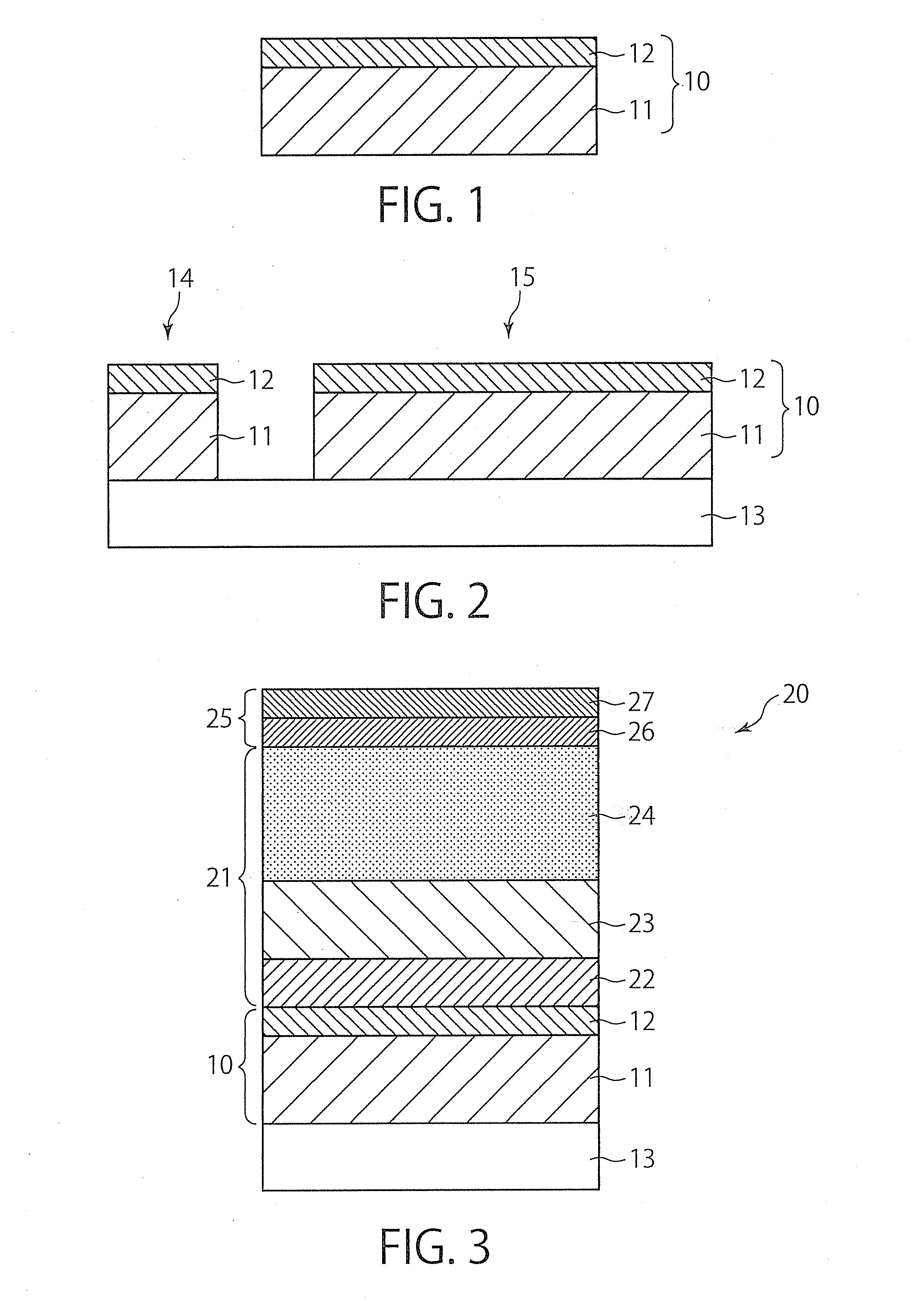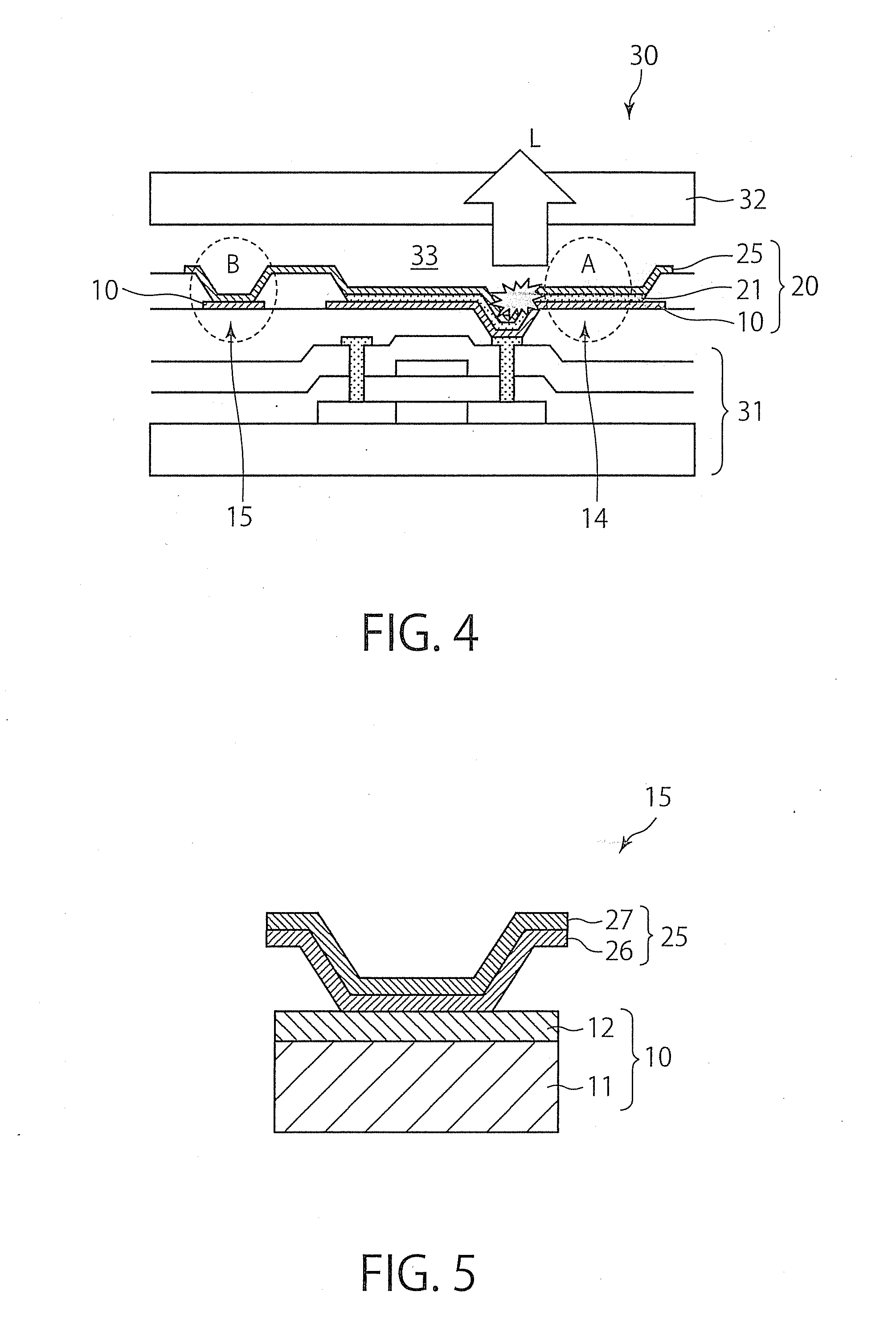Anode structure for use in organic el device, production method thereof and organic el device
- Summary
- Abstract
- Description
- Claims
- Application Information
AI Technical Summary
Benefits of technology
Problems solved by technology
Method used
Image
Examples
example 1
Preparation and Evaluation of Anode Structure
[0056]Alkali-free glass (Corning #1737) was prepared as a substrate. An aluminum film with a thickness of 150 nm was formed on the substrate by sputtering. After an aluminum target (ACX manufactured by Mitsui Mining and Smelting Co., Ltd., 203 mm diameter×8 mm thickness) was placed in a multi-chamber-type magnetron sputtering apparatus (MSL-464, Tokki Corporation) connected to a cryopump, this sputtering was conducted under the conditions of an input power (DC) of 1000 W; an ultimate vacuum of 5×10−5 Pa; a sputtering pressure of 0.5 Pa; an Ar flow rate of 100 sccm; and a substrate temperature of room temperature. Thus, an anode layer made of aluminum was formed.
[0057]An electrically conductive amorphous carbon film as a buffer layer was formed on the anode layer by sputtering. After a graphite target (1G-70 manufactured by Toyo Tanso Co., Ltd., 203.2 mm diameter×8 mm thickness) prepared by sintering graphite powder was placed in a multi-c...
example 2
Influence of Presence / Absence of Electrically Conductive Amorphous Carbon Buffer Layer on Properties
[0065]In order to investigate influence of presence / absence of the electrically conductive amorphous carbon buffer layer on properties, an ITO film was used as an anode layer to prepare an organic EL device with a structure shown in FIG. 7 in which an electrically conductive amorphous carbon buffer layer was formed on the anode layer. The reason why light-transmissive ITO film was used as an anode layer instead of a reflective film such as Al film was to conduct the experiment easily in a simplified manner, not to mention that the evaluation result of the electrically conductive amorphous carbon buffer layer in this example is also applicable to the present invention directed to a top-emission type organic EL device. Specifically, an organic EL device 50 shown in FIG. 7 has a laminated structure in which, on a glass substrate 51, an ITO anode layer 52, an electrically conductive amorp...
PUM
| Property | Measurement | Unit |
|---|---|---|
| Thickness | aaaaa | aaaaa |
| Thickness | aaaaa | aaaaa |
| Volume | aaaaa | aaaaa |
Abstract
Description
Claims
Application Information
 Login to View More
Login to View More - R&D
- Intellectual Property
- Life Sciences
- Materials
- Tech Scout
- Unparalleled Data Quality
- Higher Quality Content
- 60% Fewer Hallucinations
Browse by: Latest US Patents, China's latest patents, Technical Efficacy Thesaurus, Application Domain, Technology Topic, Popular Technical Reports.
© 2025 PatSnap. All rights reserved.Legal|Privacy policy|Modern Slavery Act Transparency Statement|Sitemap|About US| Contact US: help@patsnap.com



